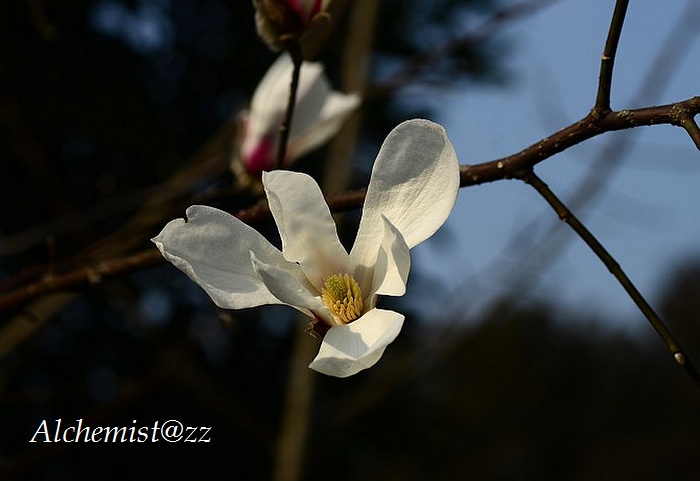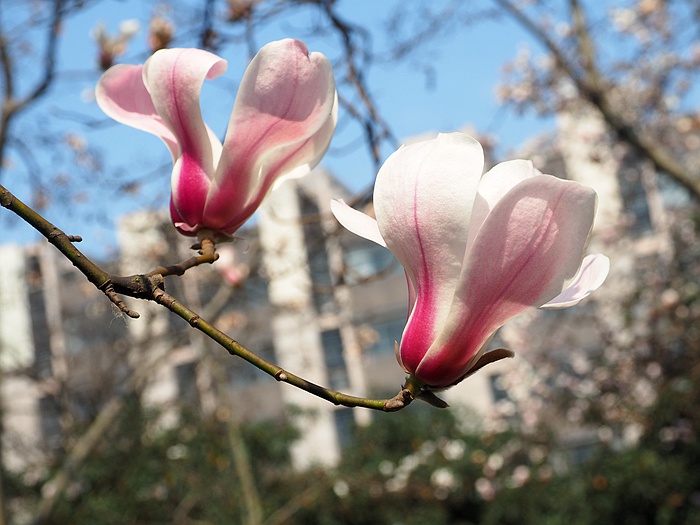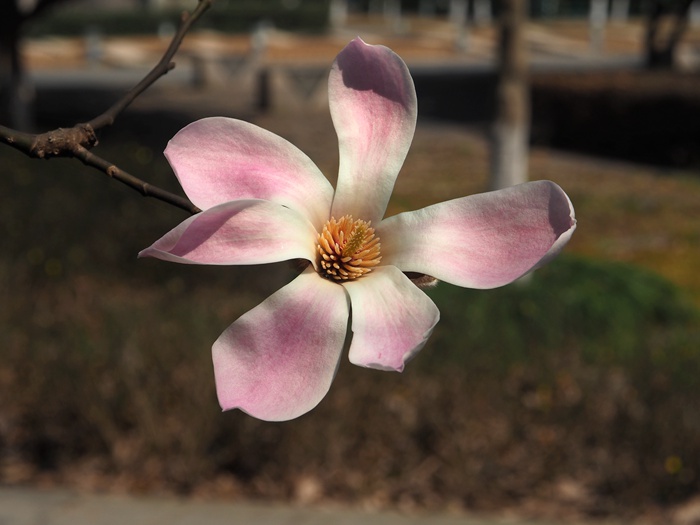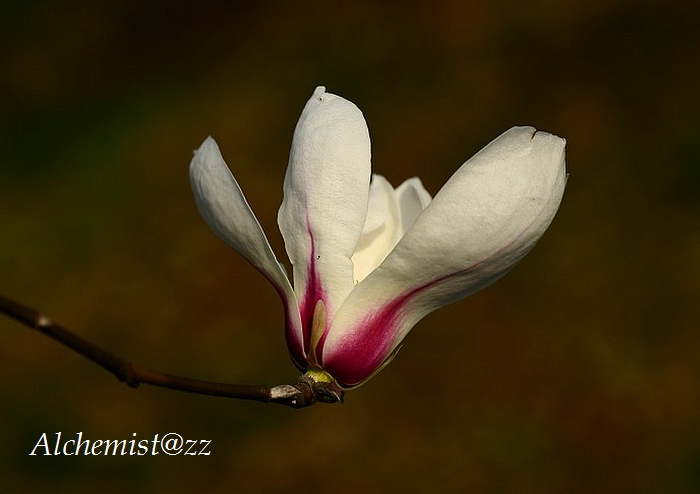望春玉兰 Magnolia biondii
- Scientific Name: Magnolia biondii Pamp.
- Ref: Nuovo Giorn. Bot. Ital., n.s., 17:275. 1910
- Synonyms: Magnolia aulacosperma Rehder & E.H.Wilson; M. funiushanensis T.B.Chao, J.T.Gao & Y.H.Ren; M. henanensis B.Y.Ding & T.B.Chao; Yulania biondii (Pamp.) D.L.Fu
- English Common Name: hope-for-spring flower
- Chinese Common Name: 望春玉兰 wàngchūn yùlán
- Family: Magnoliaceae
- Genus: Magnolia
- Distribution: Forests; 600-2100 m. Chongqing, SE Gansu, Henan, Hubei, N Hunan, Shaanxi, Sichuan.
- Photo: 03/09/2014, Hangzhou Botanical Garden, Zhejiang
Trees, to 12 m tall, to 1 m d.b.h. Bark pale gray, smooth. Twigs grayish green, 3-4 mm in diam., glabrous; terminal buds ovoid to broadly ovoid, 1.7-3 cm, densely pale yellow opened villous. Stipular scar 1/5-1/3 as long as petiole. Petiole 1-2 cm; leaf blade narrowly elliptic, narrowly ovate, narrowly obovate, or ovate, 10-18 × 3.5-6.5 cm, abaxially light green and appressed lanate but later glabrescent, adaxially dark green, secondary veins 10-15 on each side of midvein, base broadly cuneate to obtuse and decurrent on petiole, margin dry membranous, apex acute to shortly acuminate. Peduncle ca. 1 cm, with 3 bract scars, apically swollen. Flowers appearing before leaves, 6-8 cm in diam., fragrant. Tepals 9; outer 3 tepals sepaloid, purplish red, nearly narrowly obovate-linear, ca. 1 cm; tepals of middle and inner whorls white but usually outside purplish red at base, spoon-shaped, 4-5 × 1.3-2.5 cm; tepals of inner whorls smaller and narrower. Stamens 8-10 mm; filaments purple, 3-4 mm; anthers 4-5 mm. Gynoecium 1.5-2 cm. Fruiting peduncle ca. 1 × 0.7 cm, with residual long sericeous trichomes. Fruit cylindric, 8-14 cm, usually withered because of carpels partly undeveloped; mature carpels light brown, suborbicular, compressed laterally, tuberculate. Seeds cordate, with a V-shaped furrow prominent in middle, abaxially deeply furrowed, apically concave, apex inconspicuously acute; testa bright red; endotesta dark black. Fl. Mar, fr. Sep. 2n = 76*. (Flora of China)

03/09/2014, Hangzhou Botanical Garden

03/04/2017. Zijingang Campus, Zhejiang University

03/04/2017. Zijingang Campus, Zhejiang University
